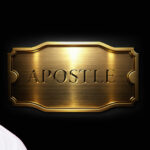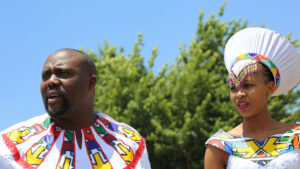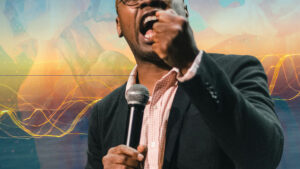Worship in the Bible takes many forms—prayer, singing, sacrifice and, yes, even dancing. Yet in many Christian circles today dancing in worship is debated or even controversial. This article explores what the Bible teaches about dancing in worship. We’ll examine dancing’s biblical roots, theological significance, and its place in the life of the believer as well as the gathered church.
Worship in the Bible takes many forms.
There are many passages we could briefly consider. But at the outset, I want to highlight two. The first is Exodus 15:20-21. “Then Miriam the prophetess, the sister of Aaron, took a tambourine in her hand, and all the women went out after her with tambourines and dancing.” The second is Psalm 149:3. “Let them praise his name with dancing, making melody to him with tambourine and lyre.”
Significantly, nowhere in scripture does God prohibit Christians from dancing in worship and praise. It, too, can be something that glorifies God (1 Corinthians 10:31). However, this means that dancing can also be done for the wrong reasons, in ways that don’t glorify him.
Dancing, Distorted Worship and Distractions
From what I’ve seen and heard, dancing in many African churches has gone to unhelpful extremes. In some churches, dancing in the presence of the Lord has become the event, the most exciting and anticipated aspect of worship. This has become so exaggerated that I don’t think it’s an overstatement to say that many church services are no longer about the worship of God but about people and their dancing.
Dancing in the African churches has gone to unhelpful extremes.
This extreme can be seen in the invention of new dance moves for praise and worship. Where I live, we’ve got dances called Thomoyi and Chwechwa, introduced by the church and for it. This is especially true of Charismatic and Pentecostal circles, though not limited to them. Some churches will not finish their service without performing these dances, while others do little else in their gathered time than dance. Again, I believe this represents a change in focus. Such dances aren’t about God or his glory. It’s all about the people and their dance moves. Church services are man-centred. They’ve become about entertainment and performing, instead of worship. Such worship is a distortion; and a distraction.
Let’s come back to one of the verses I cited above. “Let them praise his name with dancing” (Psalm 149:3). The purpose here is clear. But the purpose of much dancing in our churches is not. Christians are pursuing their own glory and praise with dancing; not God’s.
I’m not ignorant of the fact that Africans are ngabantu besingqi. That is, we are a rhythmic people by nature. Moving to music is instinctive for Africans. Whenever we hear good music, we can’t help but dance along. So I’m not suggesting a ban on dancing in our churches. This would violate our culture with an unbiblical prohibition. But we must ask if our dancing is done in a fitting and orderly way, for the edification of others and God’s greater glory (1 Corinthians 14:40).
Remembering Its Place and Purpose
As I’ve already noted, dancing in worship isn’t prohibited by God. Nor is it commanded. Thus, Christians are free in this matter. They can utilise dance as a way of worshipping God. Only, they must ask who the dancing glorifies or honours; who it turns attention to and from.
God’s glory is his own. It isn’t shared with his creatures.
We shouldn’t trifle with God or his glory. “I am the LORD, that is my name,” God says through one of his prophets. “I will not give my glory to another, nor my praise to graven images” (Isaiah 42:8). God’s glory is his own. It isn’t shared with his creatures. “For my own sake I do this. How can I let myself be defamed? I will not yield my glory to another” (Isaiah 48:11). All glory, honour, and praise belong to him alone. He will not allow his works to be attributed to a false god, which is “nothing at all in the world” (1 Corinthians 8:4). Nor will he allow the works of his hands to receive his glory.














